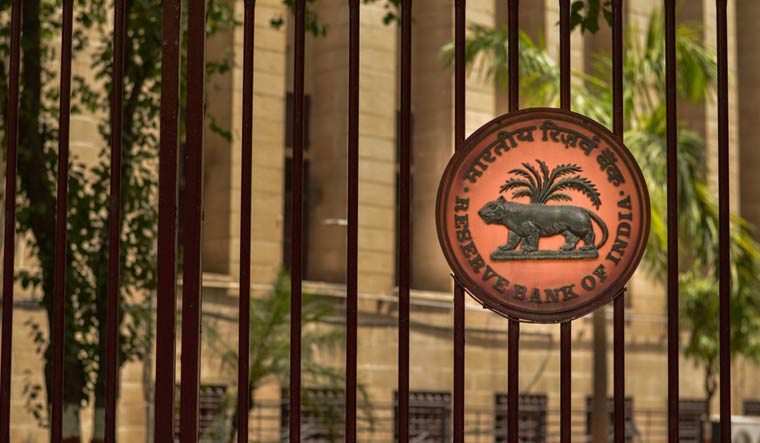The Reserve Bank of India’s Monetary Policy Committee began its bi-monthly meeting on Monday. This meeting comes at a time the world is on edge after the discovery of a new variant of COVID-19. Equity markets have been rattled by the Omicron variant and the impact it could have on the economy.
The RBI will be closely watching the developments too. In the previous policy meet, while the MPC continued to maintain the repo rate at 4 per cent, it did announce measures to mop up excess liquidity. Some economists had expected that the central bank could perhaps raise the reverse repo rate and look to normalise the repo-reverse repo rate corridor. Now, however, given the renewed concerns around the pandemic and the kind of impact the new variant and restrictions being imposed worldwide could have, the central bank may be forced to maintain status quo.
“With the economy on an upswing, led by a surge in consumer demand and ample liquidity, it was expected that the MPC would opt for gradual withdrawal of excess liquidity and a change in its accommodative stance in the December policy. However, the looming threat of Omicron and the uncertainty that it has set in motion means that it is now likely that the committee will keep key rates unchanged. A move on the reverse repo rate, which was largely expected in December, will now be postponed to the next calendar year,” said Shanti Ekambaram, group president, consumer banking, at Kotak Mahindra Bank.
The new variant apart, there are various things for the MPC to consider. Growth indicators show that the economy is firmly on the recovery path and should be back to pre-pandemic levels before the end of the current financial year. However, it will still be 5-6 per cent lower than the expected pre-pandemic growth path and that would continue to be an argument for keeping low policy rates, feels Madhavi Arora, lead economist at Emkay Global Financial Services.
Inflation will be another factor to closely watch out for. The cut in excise duties by the Centre, which was followed by similar reductions by several states, have brought fuel prices down. However, telecom companies have raised prepaid tariffs by 20-25 per cent. Goods and Services Tax on apparel and footwear was also raised. That could have a bearing on inflation going ahead. Core inflation also remains sticky.
In the last couple of policy meetings, the MPC had announced several variable reverse repo rate (VRRR) auctions to mop up excess liquidity. With this ongoing calibration of liquidity surplus acting as a precursor, Acuite Ratings too had expected the RBI to hike reverse repo rates to 3.75 per cent from 3.35 per cent split over December and February MPC meetings.
However, the risks emerging from the fresh resurgence in COVID cases in many countries and the uncertainty of the impact of the Omicron variant may weigh on the RBI’s response now, said analysts at Acuite.
“This has the potential to reverse the ongoing travel liberalisation and can possibly dampen global growth prospects. This can also reinforce the wait-and-watch approach of the RBI, thereby slowing down the progress on its policy normalisation path,” said the Acuite analysts.
Actions by the US Federal Reserve will also be closely watched by central bankers. It is expected that the Fed could soon double the pace of its monthly asset purchases to $30 billion from $15 billion. This could have a bearing on fund flows in emerging markets, although India, with forex reserves of around $640 billion, is in a far better position than where it was back in 2013, when the Fed had begun a similar taper.
Over October and November, foreign portfolio investors pulled out Rs 14,952 crore from India’s equity and debt markets, according to data from NSDL. They have further pulled out Rs 11,079 crore in the first seven days of December. For the full year 2021, FPIs are still net buyers to the tune of Rs 68,712 crore, although lower than the Rs 1.03 lakh crore they invested in 2020.
On the domestic front, credit growth has picked up in the last few months. But, while retail credit growth is strong, corporate/investment credit growth remains tepid. Consumer demand is picking up but is patchy; two-wheeler sales, for instance, have been lacklustre. Also with existing capacities nowhere close to being fully utilised, not many companies are investing in fresh capex.
also read
- With a rate cut unlikely due to high inflation, RBI may have to look at liquidity measures to lift GDP
- A food price-driven inflation spike may delay interest rate cuts by RBI, say economists
- RBI 'neutral' stance: Here's what economists say about possible interest rate cuts in December
- Horse may simply bolt again... Why RBI left repo rate unchanged again, even as it turned neutral
- Does RBI 'neutral' stance hint at rate cut in December? Repo rate unchanged at 6.5% for 10th time
“Given the uncertainties associated with the scale of economic recovery, the RBI is expected to maintain its growth focus and continue with the accommodative monetary policy stance even as it moves towards gradual normalisation of support,” said Kavita Chacko, senior economist at CARE Ratings.
The supply-side disruptions in the last few months due to shortage of coal supply, semiconductors among other things would “force” RBI to hold interest rates until the next MPC meeting, by which time there will be clarity on the impact of the new COVID variant, US Fed action and the supply-side recovery in India, said Divakar Vijayasarathy, founder and managing partner of DVS Advisors LLP.





